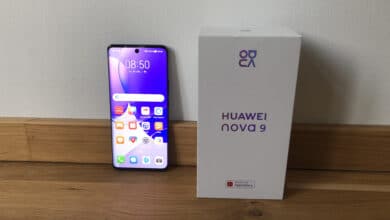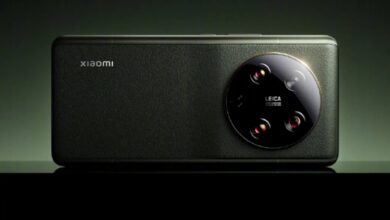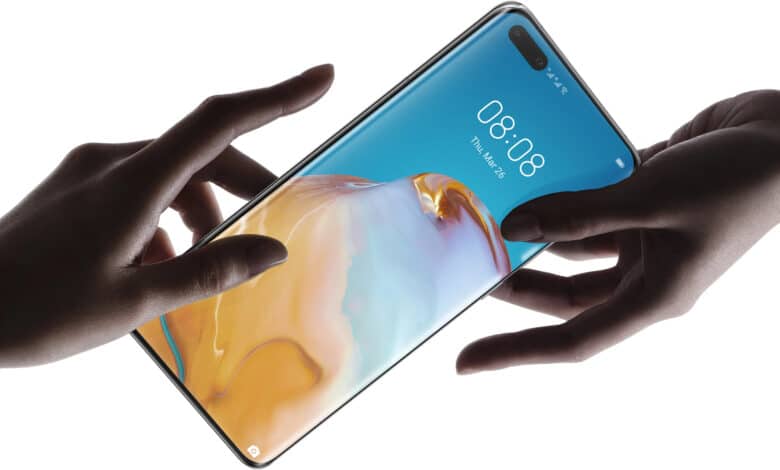
It has been a while since the USA imposed a trade ban on Huawei. But so far this whole debacle has not improved. Therefore Huawei has thought of a way to distribute their phones outside of China – and this way does not include Google services. Whether it is still worth buying a new Huawei device and whether the P40 Pro is worth considering even without the Google services, I will clarify in this review.
Workmanship and design
On the P40 Pro, Huawei has an even more rimless design than the competition. In addition to the rounded sides, the upper and lower edges of the display of this smartphone are also rounded.
Personally, I’m a fan of gesture control in Android, so I really like the rounded edges. This makes the operation look even more immersive. Below this is also the in-display fingerprint sensor.

However, I find that the placement of the front camera somewhat counteracts this design philosophy, as Huawei decided to use an array of two cameras in one punchhole. In addition to the two cameras, there is also technology for Face-Unlock built in. I think it would have been better to do without that, because there is also a fingerprint sensor under the display. Then you could make the design of the front even more futuristic by choosing a smaller punchhole like on the Xiaomi Mi 10 or by installing the whole thing in a pop-up system like on a OnePlus 7T.
Otherwise I like the design of the P40 Pro very much. As with all other Huawei flagships, there is nothing wrong with the workmanship. The two glass halves are connected by an aluminum frame. On the back side, Huawei has based the design of the camera element on the 2020-typical rectangular camera module and has also arranged their cameras in such a module, but with some of their own Huawei charm.
The P40 Pro that was provided to me came in the color “Midnight Black”, a very reflective black. Besides that there are also the colors “Blush Gold” and “Silver Frost”, which I like very much because the glass on the back is matt. The light is reflected in a unique way, which I have never seen on any other smartphone before.
Even though the P40 Pro is a full 6.6 inches tall, it looks a little bit handier to me compared to other “big” smartphones, I don’t know exactly what the reason is, but for example a OnePlus 8 Pro with 6.78 inches looks even bigger to me. So if you are not a fan of very clunky phones, you might want to keep this in mind.
Hardware and Specsheet
Specsheet
| Display | 16.71 cm (6.58 inch) OLED Resolution: 1 200 x 2 640 pixels (441 ppi) |
|
|---|---|---|
| Operating system | Android 10 Surface: EMUI 10 |
|
| CPU | Huawei, Octa-Core (64 Bit) 1st CPU: Kirin 990 5G (Cortex-A76), 2 x 2.86 GHz 2nd CPU: Kirin 990 5G (Cortex-A76), 2 x 2.36 GHz 3rd CPU: Kirin 990 5G (Cortex-A55), 4 x 1.95 GHz |
|
| Memory | 8 GB RAM 256 GB memory Expandable by Dual-SIM-Hybrid-Slot, Nano-Memory-Card up to 256 GB |
|
| Battery | 4200 mAh | |
| Connectivity | EDGE, HSPA+ (42.00 MBit/s), LTE (1 400.00 MBit/s), 5G, WLAN, Bluetooth | |
| SIM card type: | eSIM, Nano-SIM | |
| Mobile radio (MHz) | GSM | 850, 900, 1800, 1900 |
| UMTS | 800, 850, 900, 1700, 1900, 2100 | |
| LTE (belts) |
|
|
| 5G (tapes) |
|
|
| Main camera | Quad camera: 50.0 megapixel + 12.0 megapixel + 10.0 megapixel + 0.4 megapixel | |
| Front camera | Dual camera: 32.0 Megapixel | |
| Dimensions | 158.2 mm x 72.6 mm x 9.0 mm | |
| Weight | 209.0 g | |
| More functions |
|
|
Hardware
The Huawei P40 Pro offers the typical flagship features known from Huawei. This includes the latest in-house Kirin 990 5G SoC and 8 GB RAM as the heart of the phone. So that this does not run out of juice, a 4200 mAh battery is available. In addition, the P40 Pro offers 256 GB fast UFS 3.0 memory for apps, photos, etc.

Thanks to the 90 Hz refresh rate that Huawei has given the P40 Pro, this theoretical performance can be easily transformed into a fluid and responsive user experience.
Apps / Huawei Mobile Services
Due to the current poor trade relations between the USA and China, Huawei is not allowed to access Android with the so-called “Google Mobile Services” (GMS) in the operating system of its smartphones. Instead, Huawei may only use the so-called “Android Open Source Project” (AOSP). But since the AOSP lacks many features that we as users take for granted, Huawei has developed its own mobile services, the “Huawei Mobile Services” (HMS).
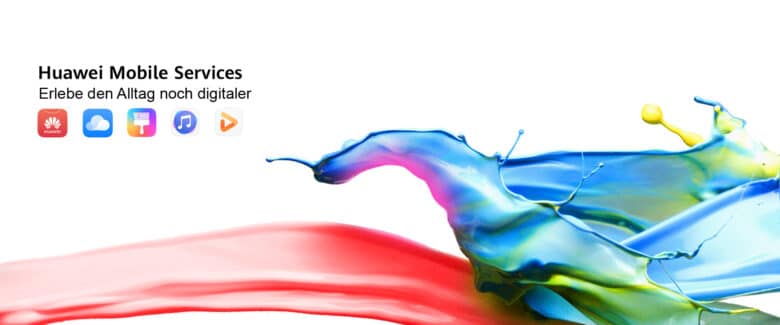
To understand the whole thing better, you have to look at the structure and origin of Android. Basically Android is an open source project based on Linux. This means that nobody, not even a company, is the “owner” of Android. Thus, in principle, anyone can release products that use the AOSP. Even sanctions can’t change this, which is why Huawei can still use Android on their smartphones.
However, over the years, Google has developed other services that they license to smartphone manufacturers. These include the Google Play Store, Google Pay or Google Maps. These services are not open source, however, but are owned by Google. Therefore, they are not found on newer Huawei devices, as these are also subject to sanctions.
Apps
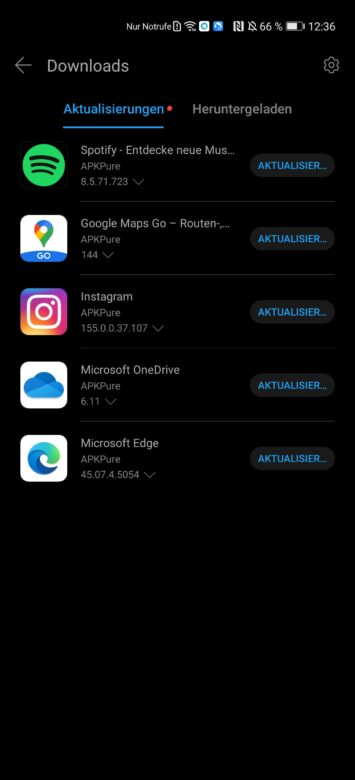
Probably the most interesting topic regarding the Huawei P40 Pro is the availability of apps. Since the Google Play Store is missing on all Huawei smartphones released after the Huawei P30 series, it is generally a bit more complicated to get the apps you use every day. But contrary to the expectations of many, it is quite possible to use the P40 Pro without being excluded from social media life in Germany. In order to remain attractive outside of China, Huawei has thought of two things here so that you can continue to enjoy your usual Android apps.
- Huawei AppGallery: The Huawei AppGallery is Huawe’s equivalent to the Google Play Store. In the last year Huawei has invested a lot to make the Huawei AppGallery attractive for developers and to create incentives to port apps to the AppGallery. In the meantime, the AppGallery is even one of the three largest App-Stores in the world.
- Petal Search: I really like the app search with the Petal Search. In a way it liberalizes the app market on Android. This pre-installed app is a search to search many third-party app stores like Aptoid at the same time. It also automatically checks the apps installed over them for updates and threats, such as viruses, similar to the Play Store. It also finds web apps from apps that are otherwise only found in the Play Store. It would be really ingenious if Petal Search would also be available on other Android devices. Especially for users who would like to get something out of the clutches of tech giants like Google.
Nevertheless, there is the problem of missing Google apps, which are without question one of the most important apps on an Android smartphone. To use Google services you have to take some detours. Google is only available as a web app, just like YouTube. Especially watching videos on YouTube is therefore not as pleasant on the P40 Pro as on other Android smartphones. Google Maps can be installed, but many features are missing, because the GMS in the background is missing, which would manage the Google account, for example.
Unfortunately, banking apps also cause problems. Even if you install them, for example, via APK files, they are usually not possible to use, because they rely on Google Services for security checks.
However, Huawei has assured that, should the day come, they will upgrade the Google Mobile Services and the Google Play Store when they get the licenses again. (Source: The Verge)
For very experienced techies, there is of course still the possibility to retrofit the missing GMS on the Huawei P40 Pro via external sources. However, this is extremely complicated and involves many dangers, which is why I cannot recommend this undertaking to anyone. Furthermore, this “retrofitting” is not intended by Google or Huawei.
Multimedia
Thanks to the 6.6-inch borderless screen, videos look great on the Huawei P40 Pro. Colors look gorgeous and the contrast is, thanks to the OLED display, flawless.
In terms of sound, Huawei has only one speaker built into the bottom of the phone. It sounds clear and the volume is loud enough without any loss of quality or tinny sound. However, I would have been happy to have a second speaker on the other side of the phone. That would have made video streaming, through the stereo sound, even more immersive.
Performance
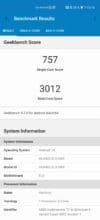
In the Geekbench benchmark, the P40 Pro gets a score of 757 in single-core performance and a score of 3012 in multi-core performance, which even beats a Samsung Galaxy S20 Ultra in multi-core performance.
Even games such as PUBG Mobile run on the P40 Pro without jerking. Thus, it is also suitable as a device for people who like to gamble on the go.
Thanks to the generous amount of RAM and the fast memory, even multitasking is no problem for the Huawei P40 Pro. Switching between different apps from the background is fast and you don’t have the feeling that apps have to be reloaded due to memory bottlenecks.
Camera
The camera is one of the very clear strengths of the Huawei P40 Pro. Since the P20 Pro, Huawei’s P-Series has stood for major improvements in camera quality for the entire smartphone industry. The P40 Pro continues this legacy. For example, at the time of writing, the P40 Pro holds second place in the smartphone camera ranking of DXOMark with 128 points, only surpassed by the Xiaomi Mi 10 Ultra.
Huawei does not follow the trend of large numbers and uses a 108 megapixel camera, but leaves it with the main sensor at 50 megapixels, which is still perfectly sufficient, because the sensor has a size of 1/1.28 inch and is therefore even larger than the Samsung Galaxy S20 Ultra. Huawei also does not save on the other sensors. The ultra wide angle camera has a 40 megapixel sensor and the periscope telecamera a 12 megapixel sensor. Each of the three cameras produces really usable photos, not as with some other Android devices, which advertise with many lenses, whereby then a large part only has rather useless sensors.
The front camera also takes nice selfies. Besides the main sensor, which has a resolution of 32 megapixels, there is also a depth sensor, which allows a portrait effect. So even group selfies with Bokeh are possible.
Due to the periscope camera a zoom up to 50x is possible. Even at 50x the quality is still good enough to share the image on WhatsApp for example. Since the image quality of the periscope camera is very similar to that of the Galaxy S20 Ultra, I can imagine that even a 100x zoom would have been theoretically possible, but Huawei decided against it because the quality decreases sharply from 50x on and no longer offers any real benefit.
As the original inventor of the night mode, Huawei also delivers first-class images at night thanks to its RYYB sensor, unique since the P30 series, which can capture more light. Compared to a Galaxy S20 Ultra or OnePlus 8 Pro, the P40 Pro’s night shots are still a little bit brighter. In addition, the P40 Pro’s edge detection is one of the best of all smartphones and portrait shots look natural, similar to those of a DSLR.
This year, Huawei has also put a lot of focus on the camera’s video features. In addition to the functions already known from previous models, such as pixel binning or slow motion, this year there is also a “Sound Zoom”. The more you zoom in on a sound source during a video, the more the sound it emits is isolated and amplified. This is super useful if you are in a noisy environment, but actually want to record the sound from a street musician, for example. Image stabilization, very important for video, is also one of the great strengths of the P40 Pro. Even with strong movements, a 4K video remains as smooth as butter.
Battery
The 4200 mAh large battery and the strict optimization of Huawei result together in a tidy battery life. I came with a charge on average over 1.5-2 days, with a screen-on-time of 6-7 hours. Also the stand-by time is incredibly good. The P40 Pro lost only 5% of its charge overnight. In addition, it supports wireless charging at 27 watts and wired charging at 40 watts. So the P40 Pro is also quickly back on its feet if the battery should give up the ghost at an unfavorable moment.
Price-performance ratio
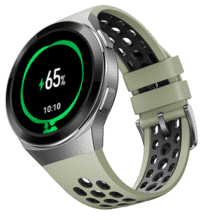
The hardware of the Huawei P40 Pro is on a par with the other top smartphones on the market. Nevertheless, the P40 Pro is significantly cheaper than many other flagship models. At the moment, the price of the P40 Pro is
In addition, the P40 Pro is often offered in bundles lately. For example, the P40 Pro is currently sold together with a Huawei Watch GT 2e on Huawei’s own site. But also in combination with a mobile phone contract there are often very reasonable offers.
The reason for this is the missing Play Store. To compensate for the resulting loss of value and to create an incentive to see beyond this gap, Huawei offers these very affordable deals. This makes the price-performance ratio for the hardware you get unique. However, the question still remains unanswered whether one wants to spend the money on an Android smartphone without the Play Store.
Summary
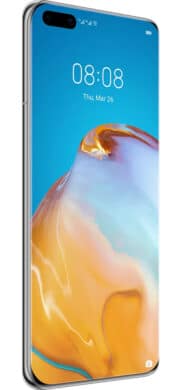
The overall hardware package and especially the camera of the Huawei P40 Pro are first class. The design is very modern and the P40 Pro is also relatively inexpensive for a high-end device from 2020, but unfortunately, the lack of a Google Play Store, which outside of China is part of the basic equipment of an Android smartphone, is a drawback.
Therefore I can’t give a general buying recommendation for the Huawei P40 Pro, because I don’t think the average smartphone buyer would do himself any favors with the P40 Pro. In my opinion, the hurdle of many missing apps is still too big and sideloading, i.e. installing apps from external sources, is sometimes too risky, considering the data you have stored on your smartphone. A device with the Play Store is most likely the better choice.
However, I think the P40 Pro could be very interesting for some people as well. Especially for techies who have a lot of experience with sideloading anyway, the Huawei P40 Pro could be a very cheap alternative to other flagships. For people who want to get something out of Google’s clutches, the P40 Pro could also be an interesting choice.
Huawei P40 Pro
Workmanship and design
Hardware
Software and Apps
Multimedia
Performance
Camera
Battery
Value for money
87/100
A first-class phone with an outstanding camera, which unfortunately loses some of its potential for geopolitical reasons.










